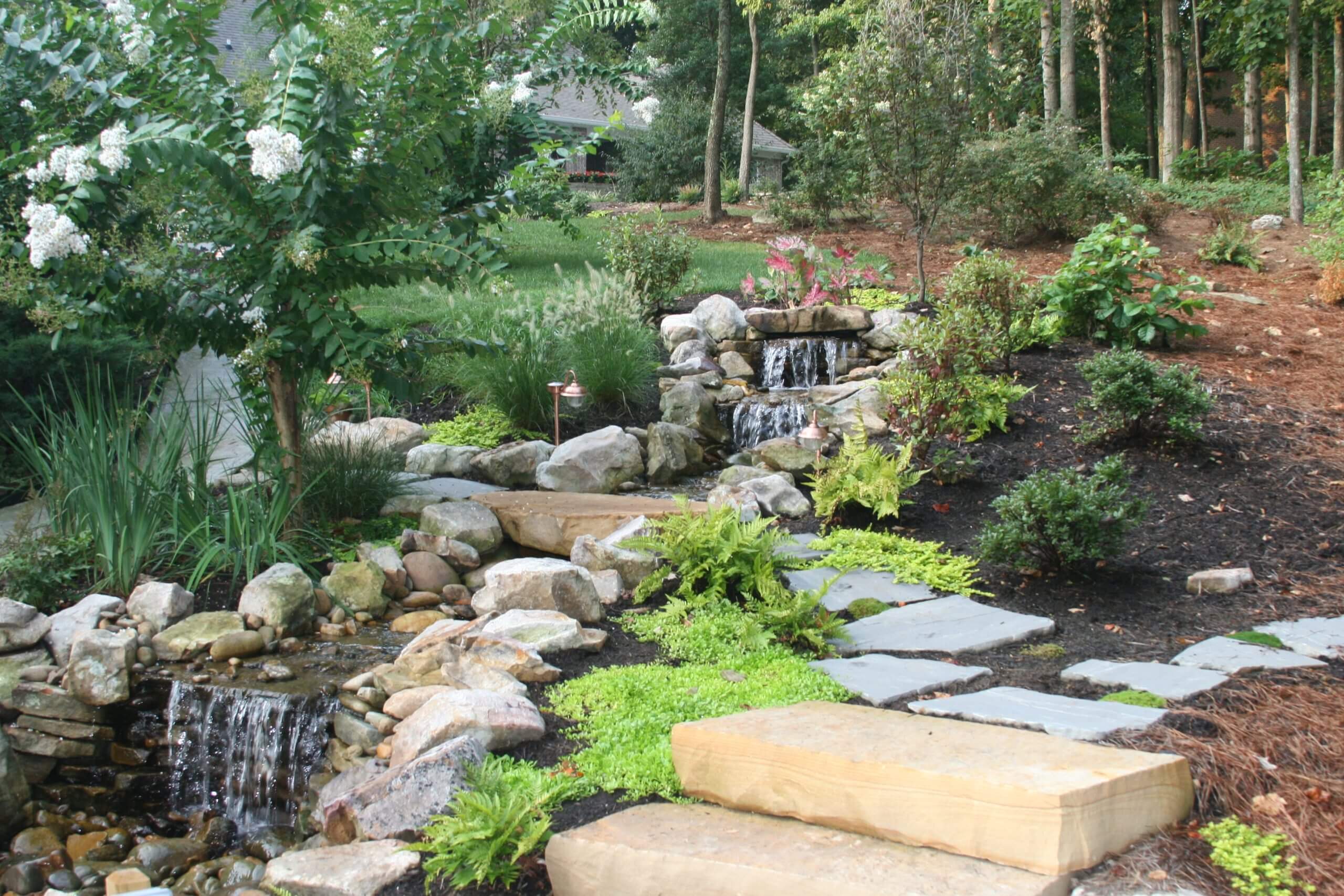Hardscapes
Just as there are trends in fashion, automobiles & electronics, there are Garden Trends. Everyone is talking about Hardscapes, here is an explanation and some examples of how it can transform your landscape.
Hardscapes : Non-living, structural elements of the garden. It helps to divide the yard into functions such as seating areas, play areas, service areas (shed / trash). Some examples are:
- Paths & Steps – connecting the house to the landscape in all seasons.
- Patios – extend your living space into the yard
- Walls & Fences – defining boundaries, screening views, creating level areas for patios
- Pools, Ponds, Fountains – add the soothing sound of water & act as a wildlife attractant
- Benches & Sculptures – special landscape features, create a seating area, accent a special spot in the garden
- Driveways & Entryways – help in moving people into and through the garden
- Arbors & Pergolas – going vertical adds dimensions to the garden, creating doors, windows and even ceilings to outdoor rooms
Hardscapes can be constructed from a wide variety of materials such as stone, concrete, wood, plastic & metal.
“NEW” Trend : working with an “Age Old” material
Stone is one of the most popular building materials for the garden right now. Stone is durable, low maintenance and yet more expensive. It’s ironic that a natural material costs more than manufactured ones. The main reason for this is the costs involved with collecting stone. Aside from the actual labor of collecting the stone, there is also the cost of hauling, gas prices & permits that are required to remove stone from certain areas. All of these factors add up to higher costs. Farmers, our forefathers had to painstakingly remove stone from their fields as they plowed. They made use of what they had, resulting in stone walls, paths, houses, wells, spring houses, barn foundations etc.
Stone – Types & Uses
Field Stone: flatter surfaces for stacking, to create retaining walls, fire pits, or for walking surfaces (paths & patios).
River Rock: Rounded by the water it can be used to line beds, some stacking, creek beds, ponds & rock gardens.
Cut Stone: Harvested mainly from quarries and cut to specific thicknesses and is more expensive. It is used for patios, steps, waterfall ledges, stack walls, stepping stones & garden seats.
Gravel: There are a variety of types and sizes of gravel, from River Gravel to Limestone. Gravel is used for pathways, stream beds, ponds or as a mulch. When used as mulch however, it’s a good idea to put landscape fabric underneath it to prevent it sinking into the dirt. As a mulch it is permanent and just requires some weeding and leaf blowing to maintain.
Boulders: Larger stones can be used as specimens to accent or provide structure within garden beds or water features.
Working with stone satisfies our need to create & work with our hands, our appreciation of natural beauty and our impulse to impose order in nature.

